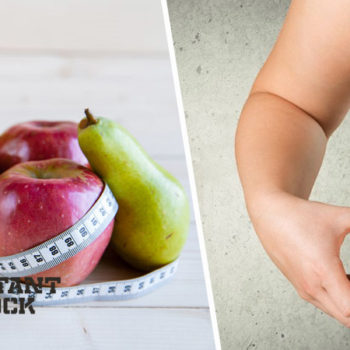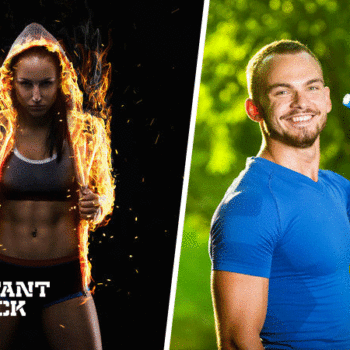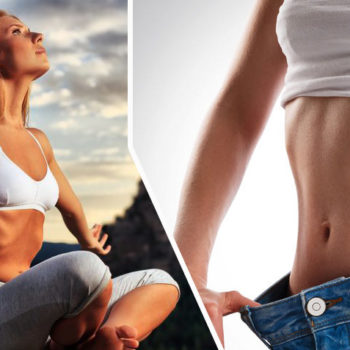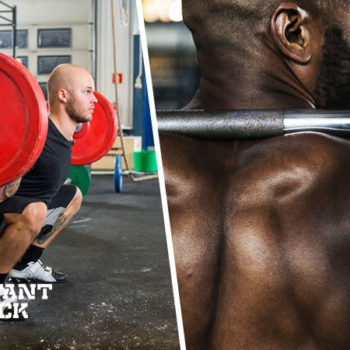Basic Fat Loss Nutrition and Meal Plan
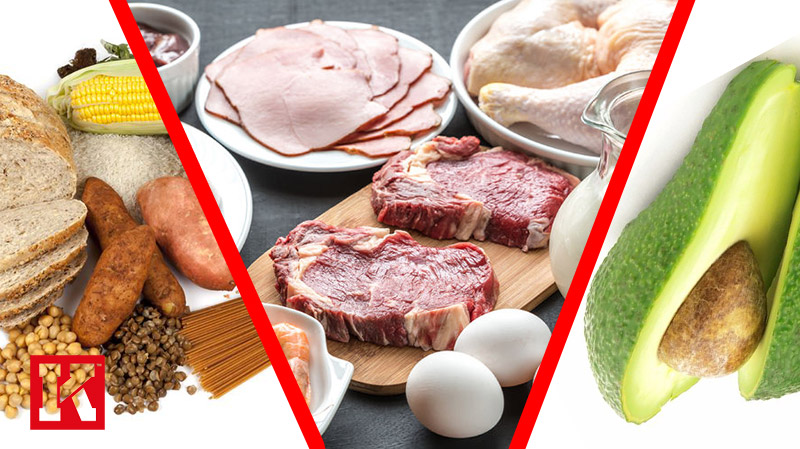
If you’re just starting out on your fat loss journey there’s two main things that will be on your mind:
- Exercise – Are you training enough, is there a good amount of cardio in your workout?
- Nutrition – How’s your diet looking, how are you managing your calories?
Both are essential to the fat burning process, and it’s impossible to have those solid, shredded abs without those two factors being tailored to your needs. However, it’s not always as straight forward as it seems.
Working out is the easy part – once you have your workout down all you have to do is keep repeating and improving that process – but diet on the other hand can be much more intense.
Temptation, calorie counting, hunger, sacrifice – all these struggles and more form part and parcel of an effective fat loss diet.
But where do you start, and what makes the basis of a good nutrition plan?
Well, here at Instant Knockout, we’ve designed a ‘bare bones’ plan for those just starting off in the cutting stages, with a system that can easily be adopted, adapted and improved.
In this write up we cover:
- Beginner’s Macro Guide – The best way to measure your protein, carbs and fats
- Proteins – Why it’s important, and the top good/bad examples of for fat loss
- Carbohydrates – What they do, and the do’s and don’ts on this food group
- Fats – How much you should really be getting, and which ones are the best choice for you
- Example Meal Plan – A basic meal plan for better results
- Conclusion – Key points to take away from this article
Beginner’s Macro Guide
Also known as macro-nutrients, macros are the three food groups protein, fat and carbs. When you hear people talk about macros, they’re usually referring to their macro-nutrient ratio, this is how much of each food group they’re using in their diet. For example “50/30/20” would be a diet of 50% Carbohydrates, 30% Protein and 20% Fat.
But what is the ideal Macro-nutrient Ratio for Fat Loss?
That’s a good question.
The problem is that everyone has different metabolic rates, with some burning fat faster than others. The Dietary Guidelines recommend a carb-heavy split : 45 – 65% Carbs / 10 – 35% Protein/ 20 – 35% Fat
Although having more carbs than other foods may sound counter-intuitive, don’t worry. As long as you’re getting the right types of carbs you can still keep on top of your fat burning goals.
What makes the biggest difference here are calories. We’ve got a great calorie calculator and list of classic cutting mistakes over on our Beginner’s Guide to Nutrition article below:
Find out how to calculate your perfect calorie range for cutting fat.
– Learn More Here –
Protein
If you know anything about the fitness industry, it’ll be the emphasis on protein. It’s essentially a food group that your body breaks down into essential amino acids. This amino acids help repair muscle and allow you to maintain and grow muscle mass after training.
It’s key to building muscle, and to some extent it can even help with metabolism.
So what foods contain protein?
When you’re looking for a good source of protein it can be a little confusing. How do you know which ones are the best – and how do you avoid eating the wrong foods that will hold back your progress?
It couldn’t be easier. We’ve outlined a list of both good and bad foods out there: the clean, and the dirty. When you’re looking to get those macros, this is the type of food we recommend eating:
Good Sources of Protein
- Eggs (13% protein) – An entire egg is around 13% protein, it also contains a range of vitamins, minerals and amino acids to fully support a healthy lifestyle.
- Tuna (30% protein) – Not only does it have a large protein count, tuna is also rich in Omega-3 which help reduce fatty acid and bad cholesterol.
- Tempeh (19% protein) – A clean protein endorsed by vegans, made out of fermented soy, it’s also been seen to increase bone density and prevent against inflammatory diseases.
- Sun-Dried Tomatoes (14% protein) – Aside from being a high source of healthy-protein, sun-dried tomatoes also contain a large amount of Vitamin C, and plenty of fiber.
- Almonds (21% protein) – A solid supply of protein, and a good amount of healthy fats, almonds are healthy source of vitamins and minerals and effective, clean protein supply.
Bad Sources of Protein
- Burgers – Processed meat, usually filled with hormones, additives and unhealthy fats. The meat may have a high protein count, but the negatives.
- Milkshakes – Although rich in protein due to the milk involved, milkshakes typically have a lot of sugar and flavorings which can raise insulin levels and maximize fat storage.
- Deep Fried Chicken – An oily protein source which is bad for your skin, it can also raise unhealthy cholesterol levels and have an impact on your heart and arteries.
- Processed Cheese – Full of unhealthy fats, and artificial coloring. Processed cheese can cause various side effects, as well as being seen to promote tumor growth in animal studies.
- Some Protein Shakes – Packed with flavorings, additives, and worst of all sugar. Sweet protein shakes can raise insulin levels and lead to more fat storage.
Key Point: Protein is an essential macronutrient that is broken down into essential amino acids. It helps with muscle repair and growth and is essential to your diet.
But that doesn’t mean you should eat any food that’s high in it. Keep it clean, do your research, and stay disciplined.
Carbohydrates
Protein may be the building blocks of muscle, but carbohydrates is the fuel that makes it all happen. This is what your body converts into energy, which not only helps you to move, but fuels your body to perform everyday functions.
Any excess carbs in your system is largely stored as fat, so it’s important that you get the balance right.
So what is a good carbohydrate?
There are two types of carbohydrates you need to know about, simple and complex. Ideally, you want to be having more complex carbohydrates. These are foods packed with slow-releasing energy, full of essential vitamins, minerals and fiber. They also help a great deal with digestion.
Simple carbohydrates on the other hand are sugar-based. They give you a quick energy boost which fades soon after. This can spike insulin levels, which can increase overall fat storage and slows up fat burning.
When it comes carbohydrates, this is what you need to know:
Good Sources of Carbohydrates:
- Brown Rice (23% carbs) – Slow releasing energy, but also a good source of fiber. Brown rice also helps to reduce bad cholesterol and regulate blood sugar levels to prevent insulin spikes.
- Oats (12%) – Another slow releasing staple-hold, oats lower bad cholesterol, reduce blood pressure and are a great source of fiber, potassium and calcium.
- Wholemeal Bread (43%) – Full of energy and a comprehensive profile of minerals, B vitamins and antioxidants.
- Sweet Potato (20%) – Good source of vitamin C, A, and B. It also has a strong mineral profile containing copper, manganese and potassium.
- Black Beans (63%) – As well as being a great complex carb, black beans are also high in fiber and protein. Pound-for-pound it’s one of the better foods out there.
Bad Sources of Carbohydrates:
- Frozen Yogurt – Although marketed as low in fat, Fro-Yo is full of sugar and sweeteners. This boosts insulin and maximizes fat gain.
- French Fries – It’s made out of potato, but don’t be fooled – this food is cooked in high-fat, unhealthy oils which can lead to heart and artery issues.
- Cake – No matter how much fruit has gone into it, cake is essentially sponge filled with sugar. It’ll jack up your insulin levels, and your fat gains.
- Breakfast Cereal – Usually advertised as the most important meal of the day – but take another look. The sugar content on some of these brands is incredibly high.
- Low Fat Options – Most foods that release a ‘low fat’ version have usually made up the difference with ‘carbohydrates of which sugar’, do your research, and check the label.
Key Point: Carbohydrates are your key to effective energy production and recovery. There are two types, simple carbs and complex. Stick to complex carbs, these have slow releasing energy and are packed with vitamins and minerals.
Fats
Proteins rebuild the muscle, carbohydrates supply the energy, so what do fats do? Create the best hormonal environment to make it all work.
Healthy fats are essential to testosterone levels, which keep your fat burning at a maximum and your muscles in prime condition. Not only that, dietary fats have strong connections to brain health, lung function, your immune system, clear skin and a healthy heart.
In short, it’s incredible – and cutting down on eating it is the worst thing you can do if you want to burn it off yourself. You just have to make sure you’re eating the right kind.
Monounsaturated Fat and Saturated Fats are your best bet. Here’s what you need to know:
Good Sources of Fats:
- Avocados (15% fat) – Loaded with healthy fats, Avocados also contain potassium, fiber and can even lower cholesterol.
- Coconut Oil (100% fat) – Absolutely FULL of benefits, Coconut Oil raises good cholesterol, and can even help build muscle while burning fat.
- Macadamia Nuts (76% fat) – Packed with vitamin A, iron, protein and a comprehensive vitamin B profile, Macadamia nuts are a great source of fat, and they’re also delicious.
- Almonds (49% fat) – Containing magnesium and vitamin E, Almonds can lower blood sugar levels, reduce hunger and promote weight loss.
- Oily Fish (13% fat) – A great source of Vitamin D, a range of Vitamin B and a lot of Omega-3 Fatty acids, which is all good for overall health and hormones.
Bad Sources of Fats:
- Ice Cream – Although you could argue the milk in Ice Cream is a good source of fat, the sugar in ice cream definitely isn’t.
- Solid Fats (Stick Margarine, Butter) – Can raise LDL (Bad Cholesterol) and lead to heart disease and stroke.
- Fast Food – It’s cooked in high-calorie refined oils that raise bad cholesterol and cause heart problems.
- Donuts and Pastry – A really bad choice. Full of sugar, additives and unhealthy cholesterol which will boost insulin and put pressure on your heart.
- Skimmed Milk – Despite being marketed as the healthier option, skimmed milk has twice as much sugar as its more wholesome alternatives.
Key Point: Fats are great for your diet – within reason. Make sure your fats are from natural sources and not from refined, artificial foods. Good fats can promote organ health, brain function, and hormone regulation – whereas bad fats can achieve the opposite.
How many meals should I eat a day?
When burning fat or losing weight, it’s believed that the more meals you have will boost your overall metabolism and help you cut down much quicker.
That’s a myth.
A recent study followed several groups of subjects, one eating 2 meals a day, the other 6, another 5, and 3-5 – but they all had the same amount of calories. The idea was to see if there was any difference in the metabolic rate between the groups, however, no differences were noted. [1, 2]
As long as you’re hitting your macros and that you’re getting in enough calories to meet your needs, you can eat as frequently (or as infrequently) as you like throughout the day.
Mouth-Watering Meal Examples
Looking for more direction on what foods work best for fat burning. Don’t worry, we’ve prepared a list of easy meals you can put together to keep things ticking over on your fat loss journey.
Here are four quick-and-easy meal ideas (a snack, breakfast, lunch and dinner) to inspire your kitchen and start burning fat fast:
SNACK: Peanut Butter and Banana Sandwich
The PB&B Sandwich is a sweet choice that not only tastes great, but is a healthy fat-cutting snack.
For this you’ll need:
- Brown Wholemeal Bread – Good complex carbs
- Bananas – Packed with vitamins and minerals
- Peanut Butter – Good source of fats and protein
Simply slice up the bread and spread the peanut butter on a side of each. Then cut up the bananas, place them on the peanut butter and you’ll be good to go.
BREAKFAST: Oatmeal and Coconut Oil
Oats with Coconut Oil is a simple morning option to kick start your day, it’s filling, nutritious and doesn’t take long to make.
For this you’ll need:
- Steel Cut Oats – Effective complex carbs
- Milk – Good source of protein and fat
- Coconut Oil – Full of good fats and packed with other benefits
Place oats and milk onto a pan and heat them at a medium temperature. Once the oats have fully absorbed, you have oatmeal. Leave it to stand for five minutes then stir in some coconut oil. The result is fantastic for your body, and your taste buds.
LUNCH: Tuna and Spinach Pasta
A hearty lunch which will hold you over until lunch time. All the essentials are there and it’s perfect for taking to work – it can be served hot or cold.
Here’s what you need:
- Tuna – Good source of protein
- Olive Oil – Full of healthy fats
- Wholegrain Pasta – Complex Carbohydrates
- Spinach – Contains iron, other minerals and vitamins
- Garlic – A vegetable with a variety of proven benefits, garlic helps decrease bad cholesterol, reduces blood pressure and increases immunity – plus it’s great for flavor
This is another healthy meal you can put together with easy. Simply cook the pasta in boiling water, as instructed on the packaging, while you drain the tuna and mince the garlic separately.
When boiled, drain the pasta and reduce the heat to medium, and then start stirring in the olive oil and garlic. Once that turns to a golden-brown, add spinach and reduce the heat. Finally, after the spinach turns soft and droops then add in the tuna.
DINNER: Stir Fried Chicken, Broccoli and Avocado on Brown Rice
This is a high protein, end-of-the-day meal. There’s a good source of carbs, and fats too. Just what you need after a hard day of burning fat.
This is what’s required:
- Broccoli Florets – Contains a rich-source of vitamins, minerals, and protein
- Avocado (chopped) – Good source of fats
- Chicken Breast (diced) – Healthy amount of protein
- Brown Rice – Wholesome complex carbs, slow releasing energy
- Ginger (shredded) – Adds flavor and helps with overall digestion
- Garlic (shredded) – Linked to reducing bad cholesterol, blood pressure, and raising immunity
- Red Onion (sliced) – Good source of vitamins
- Roasted Red Pepper (diced) – Rich in vitamin C, potent anti-inflammatory and multiple other health benefits
- Olive Oil – Full of healthy fats
- Cayenne Pepper Powder – A potent thermogenic that increases body heat and maximizes calorie burning
- Reduced Salt Soy Sauce – Can help with digestion and improves flavor
- Honey – Anti-bacterial, anti-fungal and reduces coughs and throat inflammation
This is an easy to put together meal that will make all the difference.
- To start, chop up the avocado and put it to the side.
- Boil the broccoli until soft and cooked.
- Use a non-stick wok and coat it in olive oil.
- Add the garlic, ginger and onion and cook for 2 minutes.
- Add the chicken and stir for 2 minutes.
- Pour the broccoli, soy, honey, red pepper and some water into the mix.
- Heat the rice and serve with stir fry and avocados.
Nutrition Plan – Summary
In closing, this article should give you a good idea of what you should be eating if you’re looking to burn down stubborn fat.
When it comes to nutrition, you have to remember it’s not about cutting out a certain type of food out of your diet for the best results – like carbs or fats – you just have to be sensible about what you choose.
You’re body can’t recover or maintain itself properly if you’re starving it of a certain food source. For the best results you need to choose the healthiest options of each group, and slowly reduce your caloric intake to maintain muscle mass while still burning fat.
Make sure you deal mainly in complex carbs, healthy fats, and clean protein. Balance your calories, try out some of our example meals, and the rest will fall into place.
Want to lose fat even faster?
If you want faster results, sometimes you need to go one step further than diet and exercise. Supplements are a good way to get the results you want, and the best way to do that is with a fat burner.
Instant Knockout is one of the best fat burners on the market, it’s packed with clinically proven ingredients that promote fat loss, and is even used by top fighters in the MMA.
It’s your best method to:
- Bring out those abs – Sculpt rock-hard muscle into your torso
- Workout for longer – Boost your energy for longer performance
- Cut down on your hunger – Stop cravings with effective appetite suppressants
- Burn away fat – Use up more calories throughout the day
For that ripped-finish looking physique, this is a fat burner you definitely need to check out:
